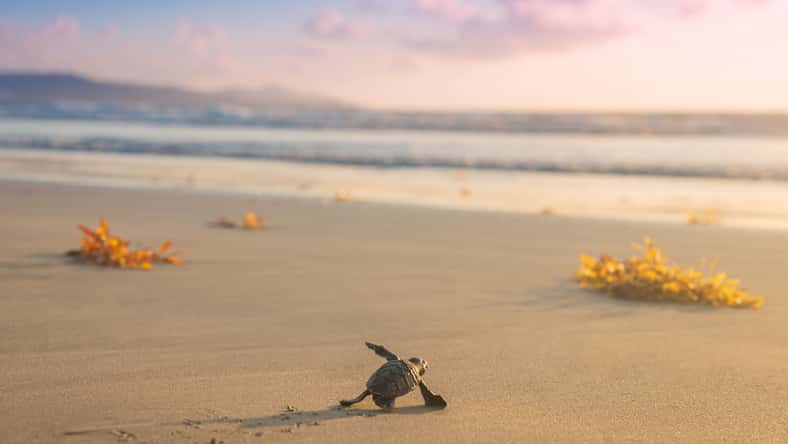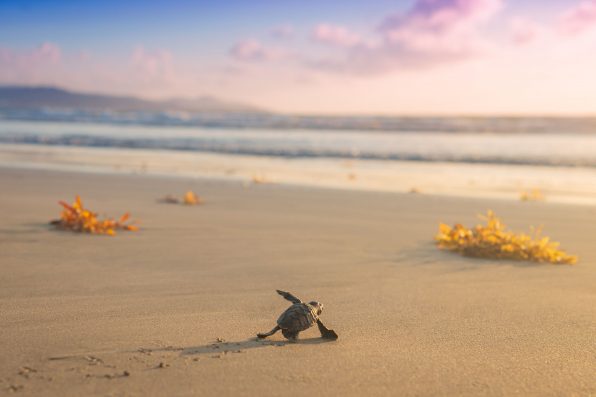Rainfall May Impact The Size Of Sea Turtle Hatchlings More Than Temperature Changes, According To A New Study

When it comes time for female sea turtles to lay their eggs, they will deposit them in a nest and cover the nest with sand. With their jobs done, the mothers return to the ocean and leave the eggs to hatch on their own.
The hatchlings must face many challenges during the journey to survival, from nest predators to rising temperatures. Only about one in 1,000 hatchlings make it to adulthood. Research has shown that size and temperature play a crucial role in the survival of baby sea turtles.
Larger hatchlings can move faster, so they can reach the water more quickly and spend less time exposed on the sand. Cooler temperatures also produce larger, heavier turtles and more males. On the other hand, warmer temperatures speed up hatching.
A new study has found that baby sea turtles’ development inside the egg may be more impacted by precipitation than temperature changes. The effects of precipitation vary depending on the species or the population.
For the loggerhead, hatchlings will not grow to their usual size if their nests are subjected to heavier than average rainfall, although they will reach a greater weight.
For green sea turtles, heavy rainfall won’t affect their body mass, but the carapace (shell) will be larger. These two species are considered to be endangered.
Researchers from the University of Tübingen in Germany and Florida Atlantic University explored how fluctuating rainfall affects the development of baby sea turtles.
They analyzed data from 37 beaches all over the world, including a longitudinal study on Florida beaches and experiments on the Cape Verde Islands.
Their findings demonstrated that rainfall cools the surface of the beach and increases the availability of water, which is needed for growth and development. As a result, precipitation is a better predictor of body size than temperature.

Altin Osmanaj – stock.adobe.com – illustrative purposes only, not the actual turtle
Sea turtles rely on the fastest possible development for their survival. Previously, it was thought that high temperatures in the nest promoted faster development.
But now, the researchers believe that local climate conditions and, most of all, the amount of moisture in the ground have a bigger influence on the success of sea turtles’ development and survival.
However, too much moisture can be fatal. Tropical storms, floods, and heavy downpours can destroy nests and remove sand from the beaches. As climate change alters rainfall patterns by making wet areas wetter and dry areas dryer, conservation strategies for sea turtles need to be updated.
“To protect the loggerhead and green turtles successfully, we still need far more data on the influence of regional weather on incubation and the development of populations. And the data must be available to all those involved in the protection of sea turtles,” said Dr. Omar Rafael Regalado Fernández, the leader of the study.
The study was published in BMC Ecology and Evolution.
Sign up for Chip Chick’s newsletter and get stories like this delivered to your inbox.
More About:Animals





